
Palo Alto College
San Antonio, Texas
SMALL TOWN HISTORY: REFUGIO, TEXAS
| Joseph Lara
| Spring 2001
|
| History 1302
| Hines |
Why Refugio?
My ties with the city originate with family who lives five
miles down in nearby Woodsboro, TX. Eulogio Rodriguez, my wife's grandfather,
was a tenant cattle rancher since the age of 16 until his mid-sixties, a
true cowboy. As a result of his retirement, he and his family had to say
good-bye to the house
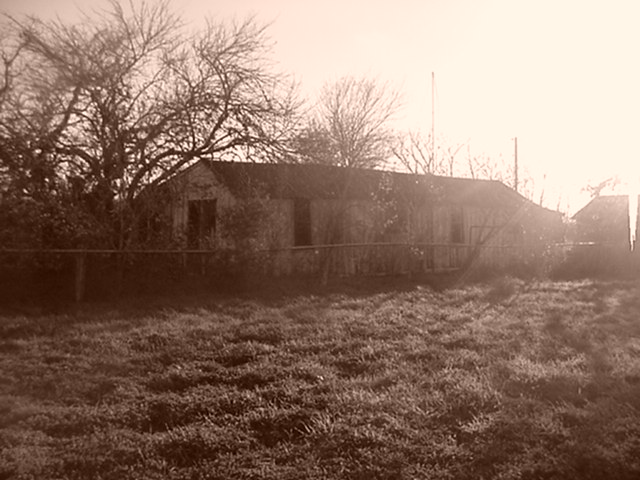 they grew up in and recently plans are in the making to
tear down the place they once called home. The barn and home which raised nine
children now stands deserted, but its memories will last forever. The
information researched is a reflection of the people who have had the
opportunity to preserve their own history. Maybe someday, I will be able to
write about the Rodriguez' impact in Refugio county.
they grew up in and recently plans are in the making to
tear down the place they once called home. The barn and home which raised nine
children now stands deserted, but its memories will last forever. The
information researched is a reflection of the people who have had the
opportunity to preserve their own history. Maybe someday, I will be able to
write about the Rodriguez' impact in Refugio county.
The First Refugians
The original residents of Refugio were the tribe
of Karankawa Indians. They were described as giants, standing six to seven feet
tall and wore no clothing except during cold months. They covered themselves in
shark oil to ward off mesquitos, women wore animal hide over their waist, both
genders tattooed their face and torsos, and both braided their hair heavily.
Their diet consisted of: alligator meat, oysters, fish, berries, bugs, spiders,
and spoiled meat. Their first encounter with Europeans was in 1525 when Spanish
settlers visited the area.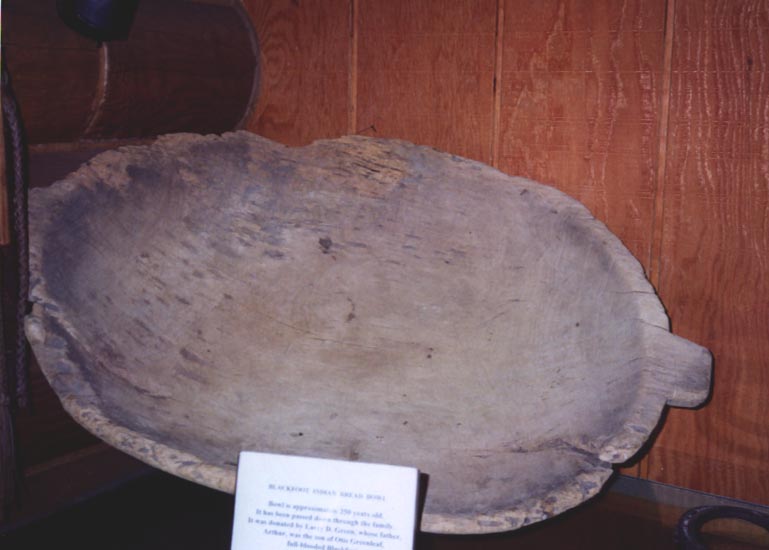
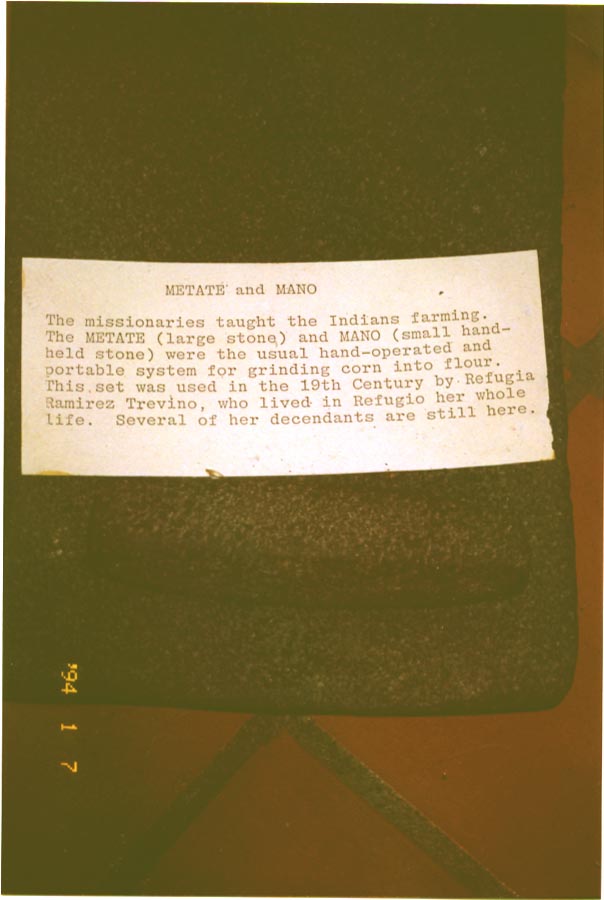
In an effort to help civilize and most importantly Christianize the tribe, Spain sent Father Manuel Silva and Father Francisco
Garza to establish a mission for the benefit of the Indians. After 30
years, however, their attempts were unsuccessful. They were described as savages
and cannibals by the early Irish settlers of the city and were eventually
killed off by smallpox, venereal diseases, and hate brought with the settlers. The elimination of Karankawas
from the city and county occurred around 1851 when the early settlers attacked
and killed most of them, while the remaining fled the area into Mexico. In 1998 an archaeological project was conducted in front of the current church by the
University of Texas at San Antonio.
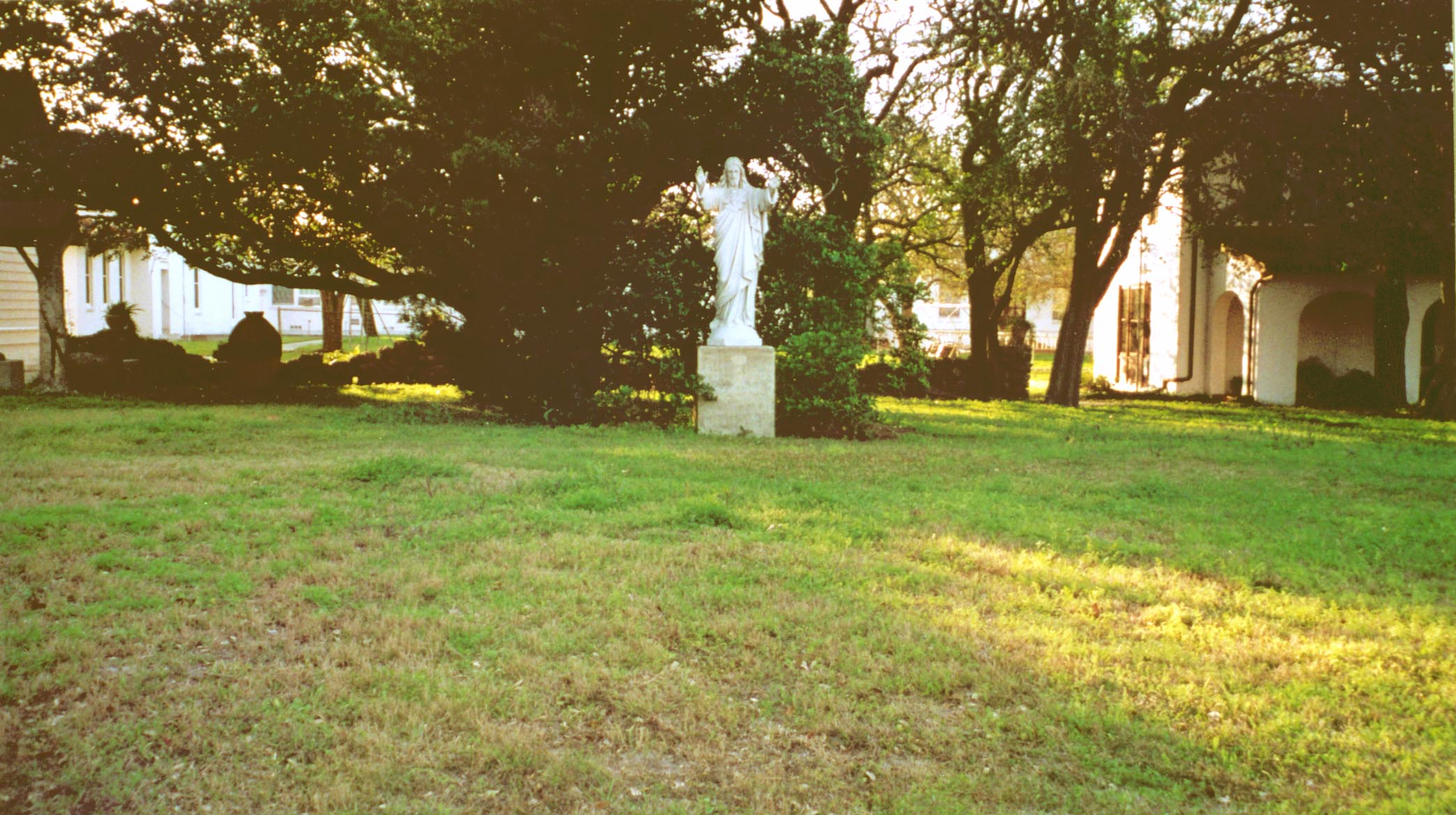 Many pieces of Spanish ceramics, animal
bones, and other relics were found at the site. Although, Father Silva's and
Father Garza's attempts to Christianize the Indians failed, their decision to
establish the mission in Refugio was significant in the town's name. In 1795 the
site was chosen for the mission by Father Silva and named, Nuestra Senora Del
Refugio or Our Lady of Refuge. The site was chosen for its grazing, possibilities for raising
corn, beans and other vegatables. As a result of the Indians disinterest in
the mission, it was deserted for a long period of time. From 1820 - 1830 the
mission went to total ruin and it wasn't until the Irish colonizers arrived that the
mission began to see new life. As the luck of the Irish would have it, the
Irish immigrants were also Catholic and saw to it that the same site selected
200 years ago would remain the same. Our Lady of Refuge was the last mission
built in Texas. The Irish restored the mission in 1845 using the ruins of the
old mission. After the church survived the Civil War the parishioners saw the
need for improvements and again the mission was rebuilt using the stone from the
old mission in 1866. When the need for more space was identified the
mission was rebuilt to the present church for a mere $14,000 in 1901, and became
the largest frame church in South Texas at the time. In 1975 restoration of the
current church was done.
Many pieces of Spanish ceramics, animal
bones, and other relics were found at the site. Although, Father Silva's and
Father Garza's attempts to Christianize the Indians failed, their decision to
establish the mission in Refugio was significant in the town's name. In 1795 the
site was chosen for the mission by Father Silva and named, Nuestra Senora Del
Refugio or Our Lady of Refuge. The site was chosen for its grazing, possibilities for raising
corn, beans and other vegatables. As a result of the Indians disinterest in
the mission, it was deserted for a long period of time. From 1820 - 1830 the
mission went to total ruin and it wasn't until the Irish colonizers arrived that the
mission began to see new life. As the luck of the Irish would have it, the
Irish immigrants were also Catholic and saw to it that the same site selected
200 years ago would remain the same. Our Lady of Refuge was the last mission
built in Texas. The Irish restored the mission in 1845 using the ruins of the
old mission. After the church survived the Civil War the parishioners saw the
need for improvements and again the mission was rebuilt using the stone from the
old mission in 1866. When the need for more space was identified the
mission was rebuilt to the present church for a mere $14,000 in 1901, and became
the largest frame church in South Texas at the time. In 1975 restoration of the
current church was done.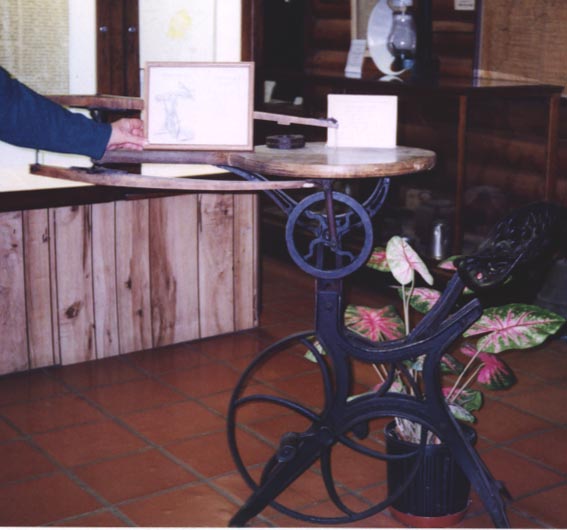 During restoration, when the church's statues were
repainted it was discovered that they were made of metal, dating them to the
19th century. With funding currently in the works there are hopes by the people
of Refugio to someday rebuild the original mission created by Father Silva for
the Indians. The picture of the bell is one of four original bells from the
mission. The towers they stood in were destroyed twice during battle - one
during the Mexican Independence Movement (1810-1821), and again during the
Texas Independence Movement. Since the mission was no longer operating, the bells
were sold for scrap and while in route to Victoria, an ox-cart wheel broke and
the bells were abandoned. Two were destroyed and one later discovered by
Nicholas Fagan and it hung in the Fagan private chapel for 50 years until it
was eventually donated to the museum where it stands today. The date on the bell
is 1737.
During restoration, when the church's statues were
repainted it was discovered that they were made of metal, dating them to the
19th century. With funding currently in the works there are hopes by the people
of Refugio to someday rebuild the original mission created by Father Silva for
the Indians. The picture of the bell is one of four original bells from the
mission. The towers they stood in were destroyed twice during battle - one
during the Mexican Independence Movement (1810-1821), and again during the
Texas Independence Movement. Since the mission was no longer operating, the bells
were sold for scrap and while in route to Victoria, an ox-cart wheel broke and
the bells were abandoned. Two were destroyed and one later discovered by
Nicholas Fagan and it hung in the Fagan private chapel for 50 years until it
was eventually donated to the museum where it stands today. The date on the bell
is 1737.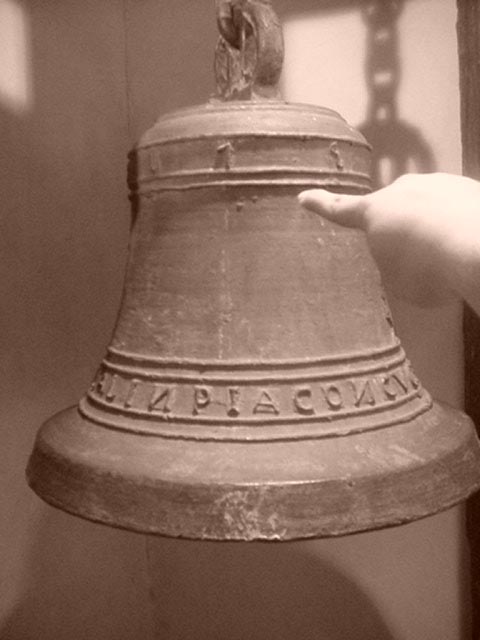
The Founding Fathers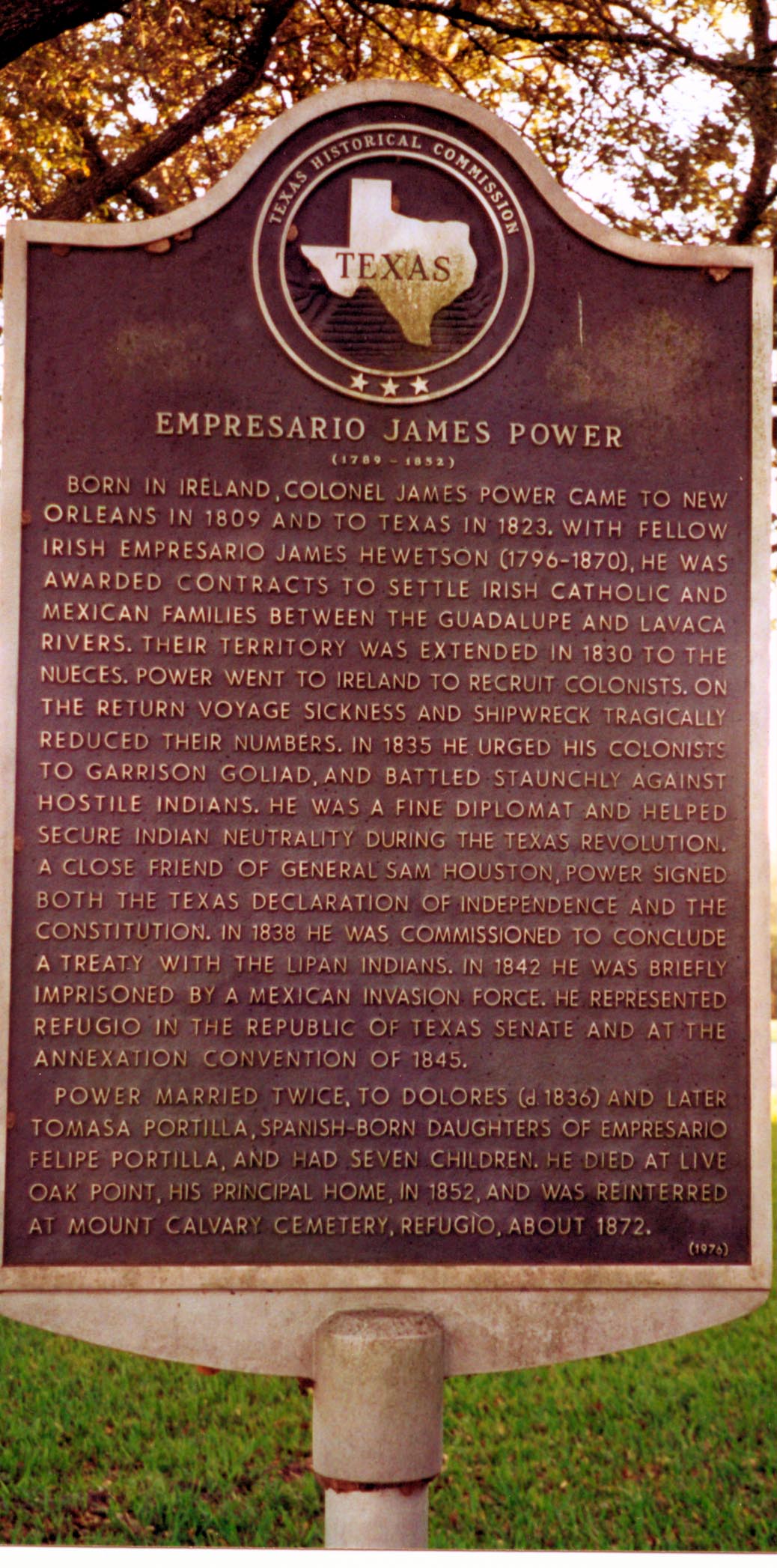
On April 21, 1830
the foundation for present day Refugio was established by her founding fathers.
Henry Doyle, a native of Ireland was authorized to construct a chapel at the
Mission or Refugio. In 1831, James Powers and James Hewetson obtained an
empresario contract from the Mexican government to bring over 200 settlers from
Ireland to the Refugio area. Most of these settlers came from the County Wexford
in the southern part of Ireland. It wasn't until 1834, after a long and deadly
journey that they arrived on the ship "Sabine" at Copano a few miles from the
mission. Many of the descendents reside in Refugio today. Prior to the arrival
of the Irish in the area, Refugio was already a popular site. The Karankawa
Indians first camped and later established a village in the area, soldiers of Spain often
camped in the area, a Spanish Captain, Basterra, visited the area as early as
1747. After settling in the area James Heweton spent little time in the area and
became a successful businessman in Mexico. James Power, however, played a
significant role in Refugio's settlement by the Irish empresarios. In 1821 both
Power and Hewetson learned of Moses Austin's colonization project in Texas.
They then visited the area and found the idea of colonization even more
appealing after the recent independence of Mexico from Spain. Many of the Irish settlers recruited by Power and Hewetson died
from disease in their journey to Texas. They knew nothing other than their 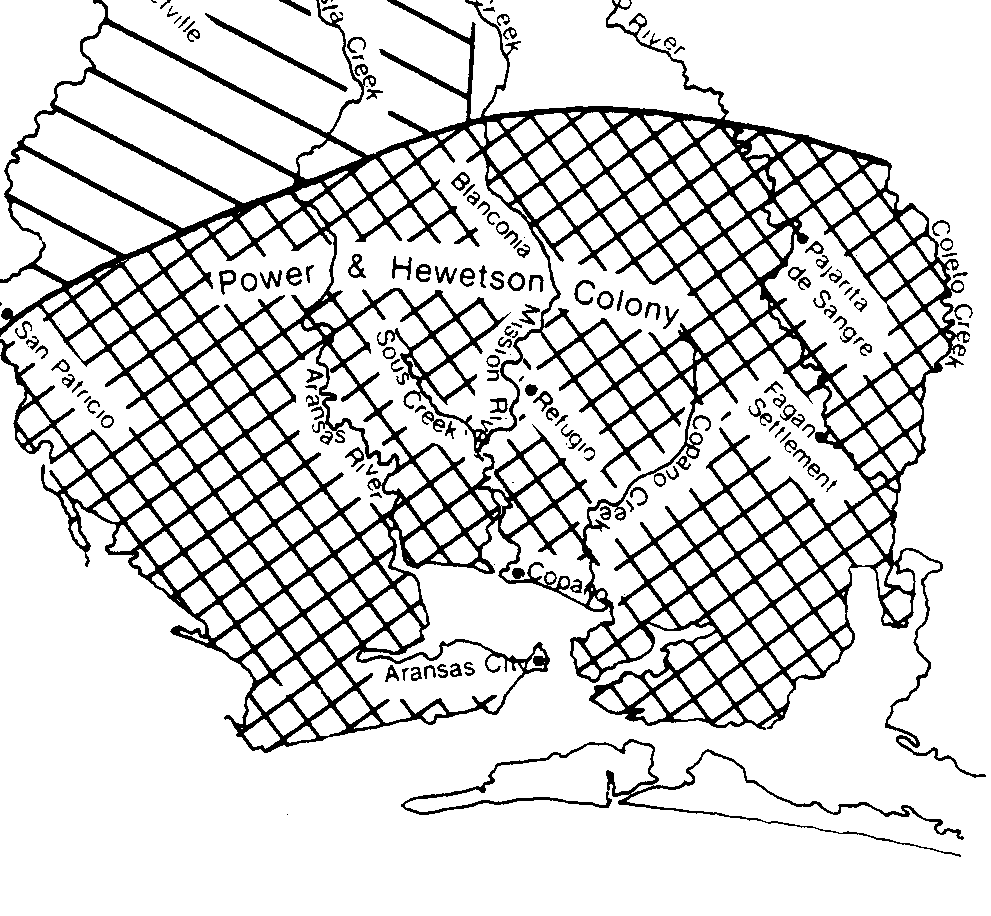 native Ireland. They had to adjust to the heat of Texas and their first
encounters with rattlesnakes and water moccasins. Being deeply religious people, their
only experience with these serpents was what they read in the bible. After
approximately 10 years of Mexico's independence it began to face troubles under
native Ireland. They had to adjust to the heat of Texas and their first
encounters with rattlesnakes and water moccasins. Being deeply religious people, their
only experience with these serpents was what they read in the bible. After
approximately 10 years of Mexico's independence it began to face troubles under
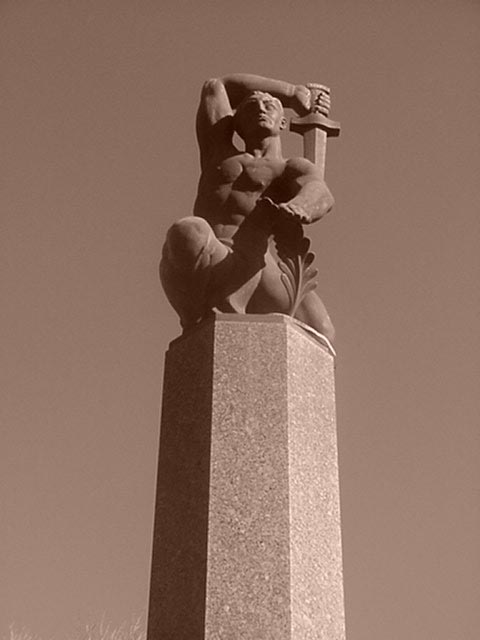 the rule of now dictator, General Santa Anna. He feared that because of
increased American interest that Texas might be lost. So too, came the increased
presence of soldiers in the area. At the same time several Americans were
settling into the area without Mexico's approval. A zero tolerance rule was
put into effect by Santa Anna's relative, General Cos, and Power was advised
that punishment would come to all Texans who failed to obey Mexican law. It was
because of the show of force that militias were formed and for Refugio, their
leaders were James Power and his Captain Ira Westover. Power was later
elected as a delegate for Refugio and appointed by General Sam Houston to serve
on the Land and Indian Affairs Committee. Later, during a meeting of the
delegates, Sam Houston called for a Declaration of Independence made by the
people of Texas. It was James Power who was the first to sign followed by the
other delegates. Power died at the age of 63 on August 14, 1852 and his body was
moved to its now present site in 1870.
the rule of now dictator, General Santa Anna. He feared that because of
increased American interest that Texas might be lost. So too, came the increased
presence of soldiers in the area. At the same time several Americans were
settling into the area without Mexico's approval. A zero tolerance rule was
put into effect by Santa Anna's relative, General Cos, and Power was advised
that punishment would come to all Texans who failed to obey Mexican law. It was
because of the show of force that militias were formed and for Refugio, their
leaders were James Power and his Captain Ira Westover. Power was later
elected as a delegate for Refugio and appointed by General Sam Houston to serve
on the Land and Indian Affairs Committee. Later, during a meeting of the
delegates, Sam Houston called for a Declaration of Independence made by the
people of Texas. It was James Power who was the first to sign followed by the
other delegates. Power died at the age of 63 on August 14, 1852 and his body was
moved to its now present site in 1870.
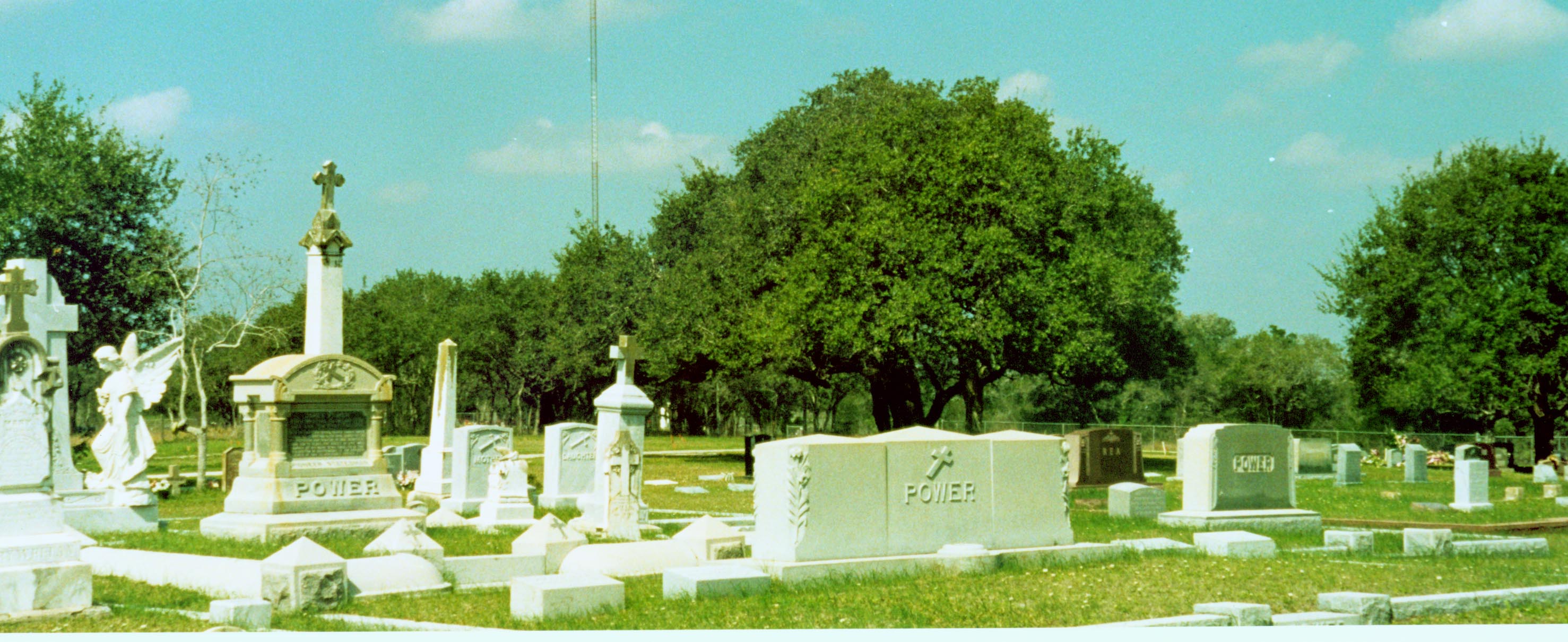
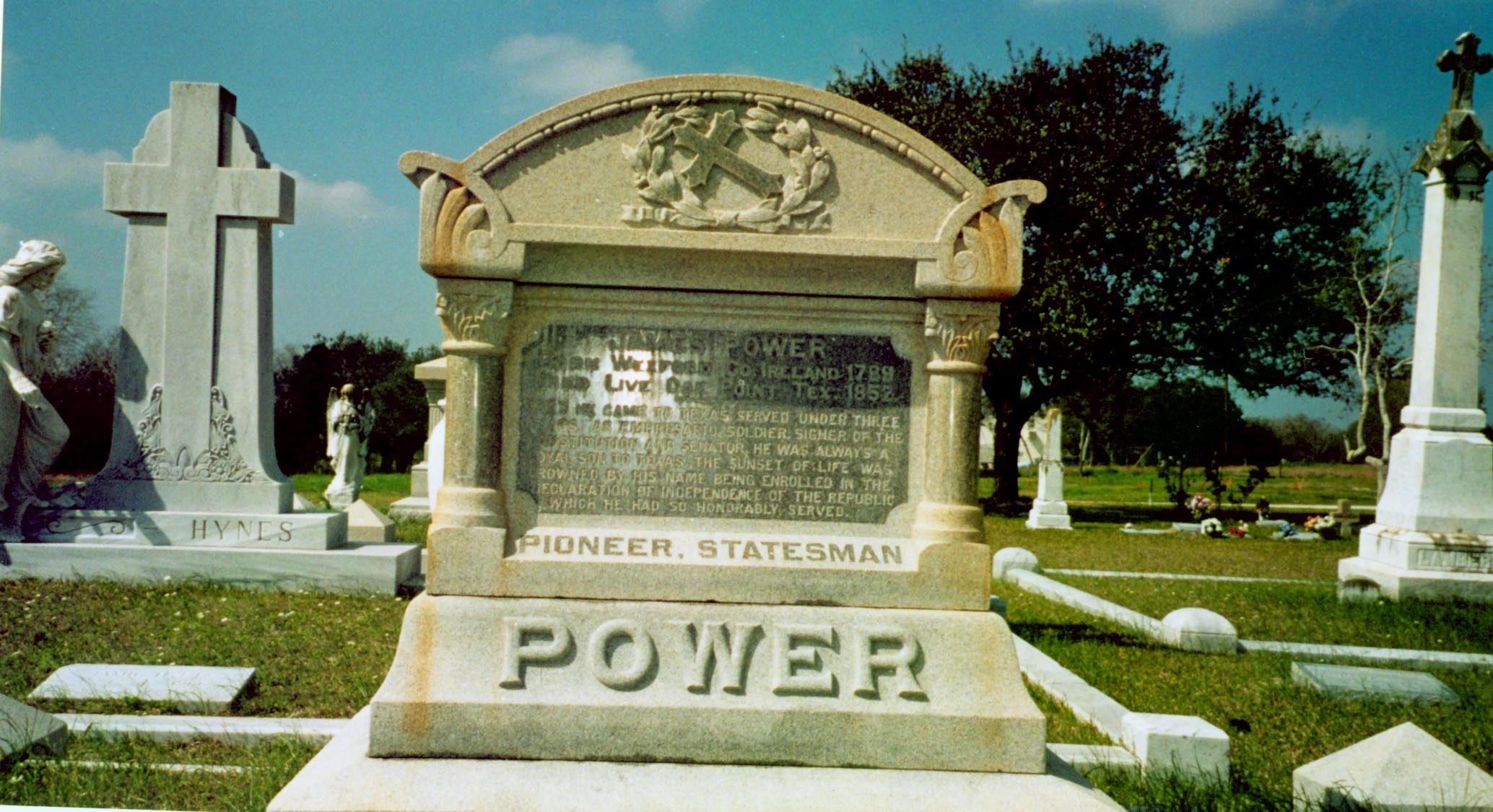
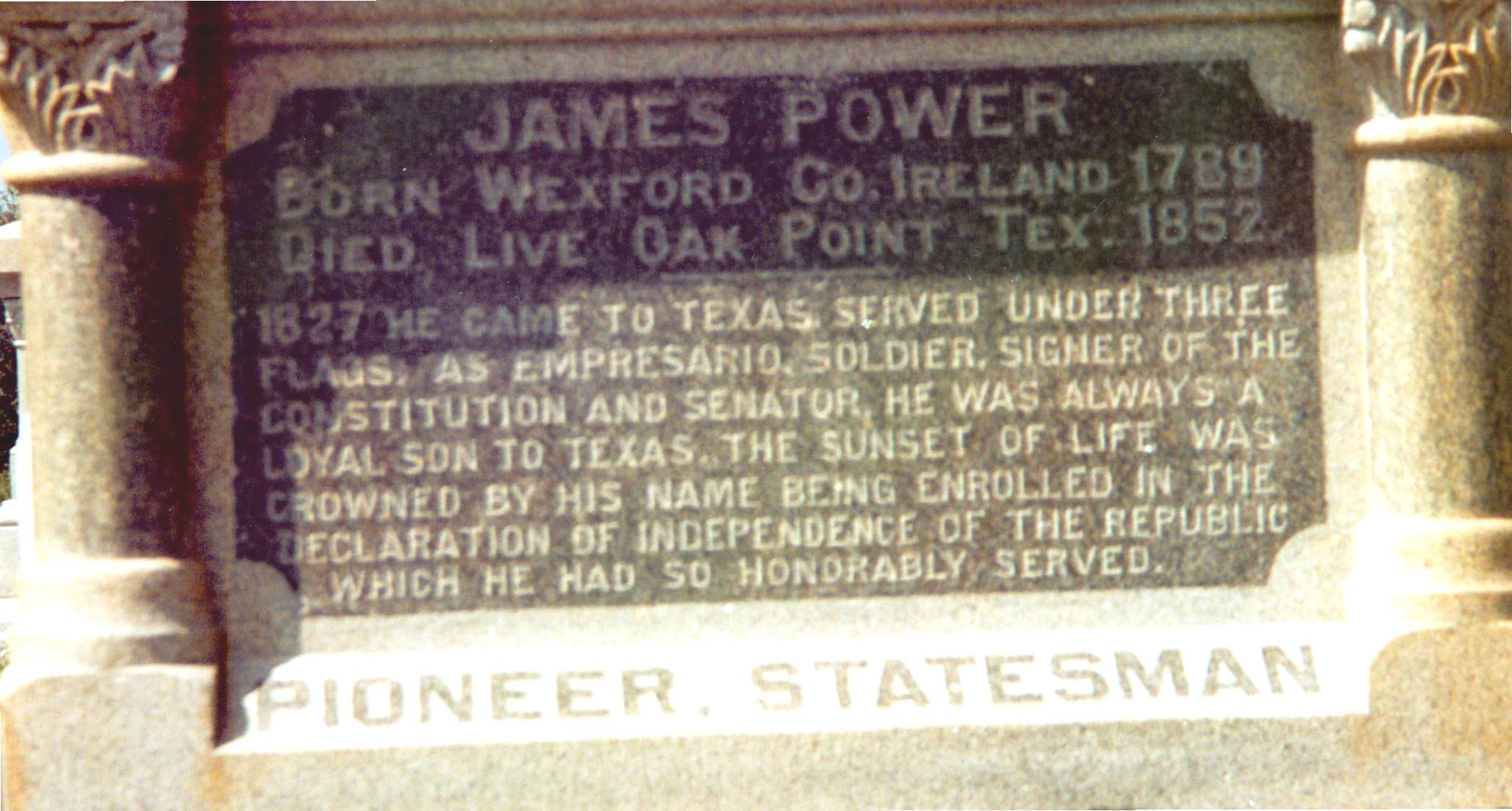
Battle of Refugio
Capt. Amon B. King arrived in Refugio on March 9th
or 10th, 1836 after a retreat into Goliad. He found that the area was controlled
by Mexican rancheros and Indians. They were attacked, with only 46 men and three
down, he retreated into the mission and requested reinforcments from Goliad. He
was presented with 120 to 150 men under Colonel William Ward and they arrived on
March 13, 1836. When he arrived, the mission was surrounded by 100 to 200
Mexican troops. Ward and his men eventually sneaked into the mission and both
waited out to rest. After resting, Ward's men decided to attack the enemy once more during the evening, gaining supplies. A dispute occurred
between the two heads of the army.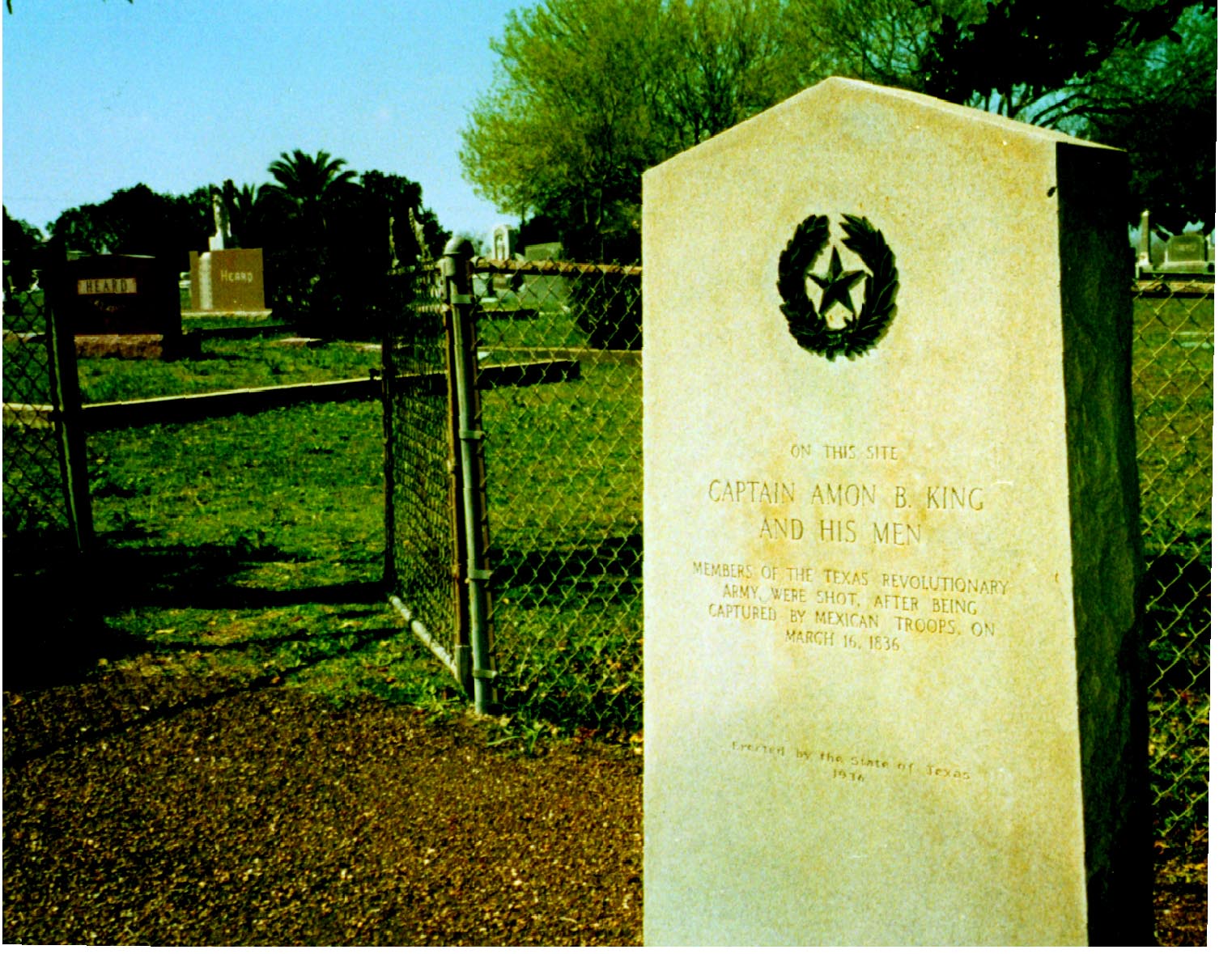 King disputed Ward's command after King argued
he had already faced the enemy. Ward didn't agree and King left the mission.
They attacked Mexican owned ranches and then came back to the mission where they
found 1,500 Mexican army men occupying the city of Refugio. After being noticed
by the enemy and after four attacks between King and Urrea's men, King and his
men were captured. Thirty-six men including King were taken approximately one mile north
of the mission, connected by a single rope in pairs. While this was going on,
Ward and his men at the mission went into battle and later retreated to Goliad
with orders. Mexican soldiers were upset after noticing the missing Texans and
took control of the mission containing women and children and the injured. Urrea
left the mission on March 16th and marched toward Goliad.
King disputed Ward's command after King argued
he had already faced the enemy. Ward didn't agree and King left the mission.
They attacked Mexican owned ranches and then came back to the mission where they
found 1,500 Mexican army men occupying the city of Refugio. After being noticed
by the enemy and after four attacks between King and Urrea's men, King and his
men were captured. Thirty-six men including King were taken approximately one mile north
of the mission, connected by a single rope in pairs. While this was going on,
Ward and his men at the mission went into battle and later retreated to Goliad
with orders. Mexican soldiers were upset after noticing the missing Texans and
took control of the mission containing women and children and the injured. Urrea
left the mission on March 16th and marched toward Goliad.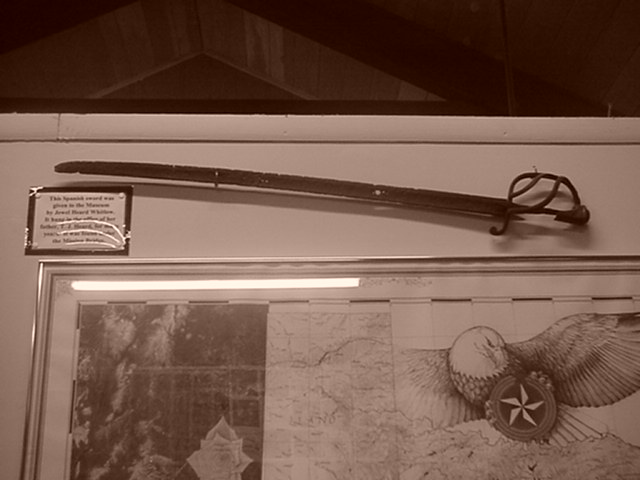 Under pressure from
peers he then ordered the 32 Texans (King's Men) killed and they were shot in
cold blood and not treated as prisoners of war. While Ward was trying to retreat,
he ended up only traveling in circles around the mission and was captured. He
then was taken to Goliad eventually where on Palm Sunday, March 27, he and
Fannin's men were massacred even after they surrended under a white flag. King's men in
Refugio were left to rot and were re-discovered by Refugians after their bones
were found after people began to settle again in the area.
Under pressure from
peers he then ordered the 32 Texans (King's Men) killed and they were shot in
cold blood and not treated as prisoners of war. While Ward was trying to retreat,
he ended up only traveling in circles around the mission and was captured. He
then was taken to Goliad eventually where on Palm Sunday, March 27, he and
Fannin's men were massacred even after they surrended under a white flag. King's men in
Refugio were left to rot and were re-discovered by Refugians after their bones
were found after people began to settle again in the area.
Refugio County Seat Debate
In 1870, several petitions were sent out over the
county asking for removal of the county seat from Refugio city. The towns favored were
Rockport, St. Mary's and Copano. The mission at the time was rotted away and there were few people
living in the city. Many, even the town's leaders, were living in surrounding cities along the coastline.
There was no jail. Prisoners were just chained up in rooms of the courthouse. No meetings were held by the town
council since 1861. In 1870 the population of the city was 2,320. The town of St. Mary's was favored
for its trade and commerce areas. It wasn't until late in the debate that those living in the town
of Refugio decided to defend their city, taking much pride in doing so. The end result was the creation
of two seperate counties out of one. Aransas county was created and so were its boundries. When the
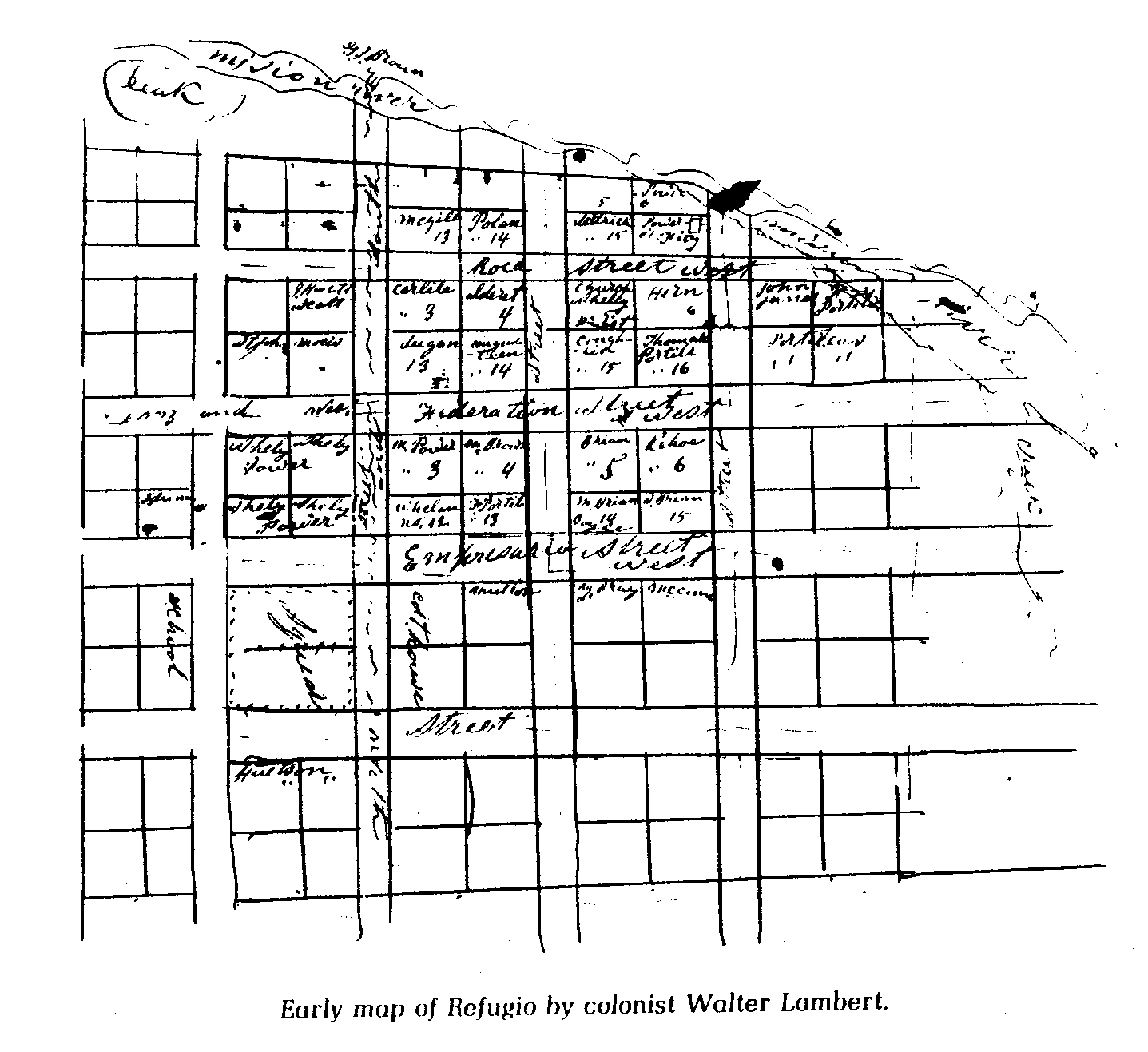 news finally reached Refugio it was described as the biggest Irish wake ever held. In a nearby saloon
an Irishman was quoted, "Faith and bejabers, and the damn yankees got all the water there was in the
county, and, begobs, it is me that hopes they-all will drown their damned selves in it! Come on byes and
how about another wee drink?" The festival was held at Bill Doughty corner saloon which opened in 1873. The picture of bottles
are the same bottles which surrounded the corner saloon. They were placed bottoms up as the floor to
the sidewalk. They lasted from 1875 - 1931 and the saloon had a gambling house connected where a many
"shot it out" to settle a poker game.
news finally reached Refugio it was described as the biggest Irish wake ever held. In a nearby saloon
an Irishman was quoted, "Faith and bejabers, and the damn yankees got all the water there was in the
county, and, begobs, it is me that hopes they-all will drown their damned selves in it! Come on byes and
how about another wee drink?" The festival was held at Bill Doughty corner saloon which opened in 1873. The picture of bottles
are the same bottles which surrounded the corner saloon. They were placed bottoms up as the floor to
the sidewalk. They lasted from 1875 - 1931 and the saloon had a gambling house connected where a many
"shot it out" to settle a poker game. 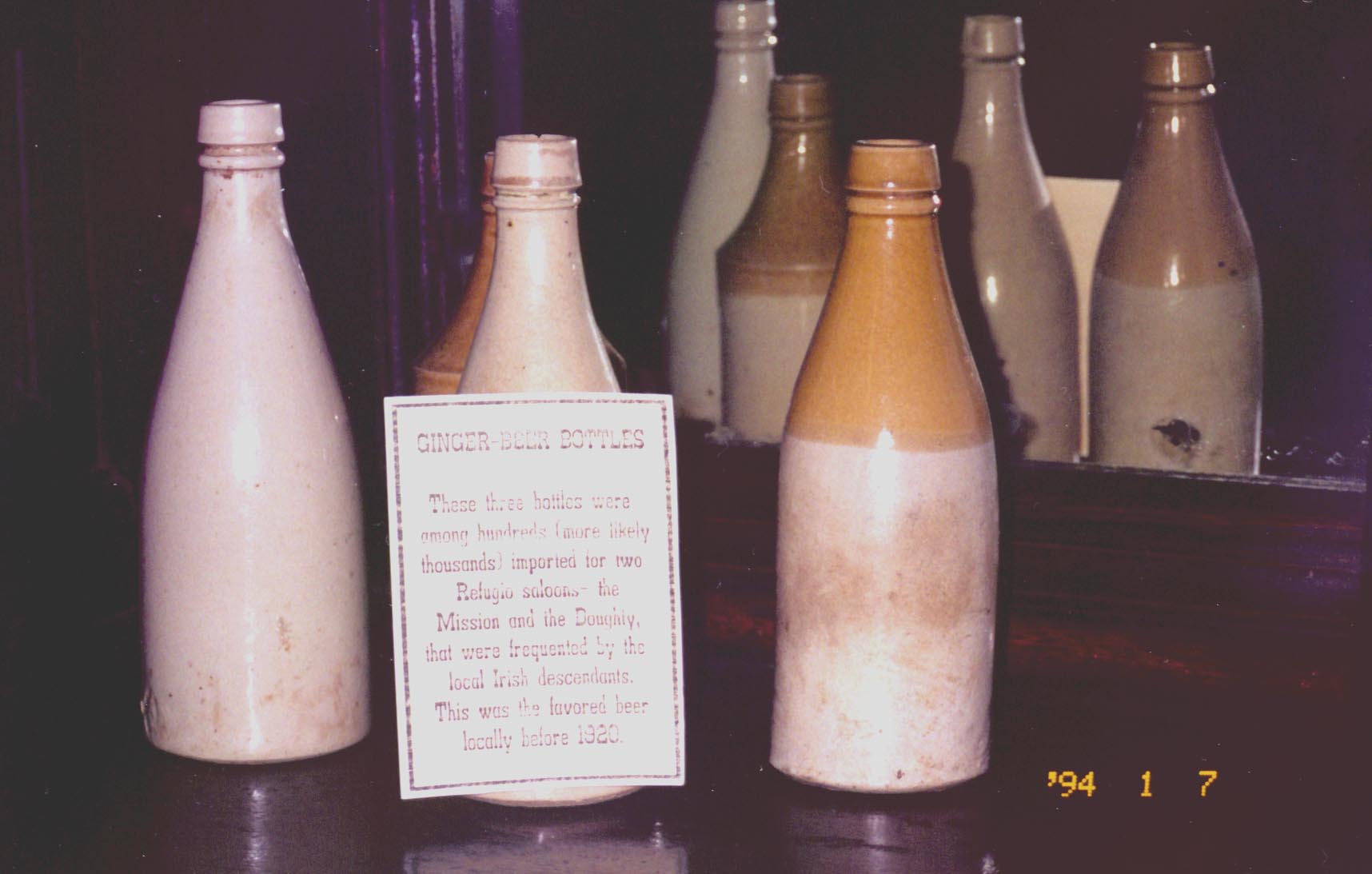
Spanish-American War
On December 13, 1896 a citizens meeting was held at the courthouse to protest
the wrongs suffered by the Cubans by the Spanish. A formal document was produced to present Refugio's
support in the liberation of Cuba from Spanish rule.
Refugio's Rough Rider
J.T. Armstrong was the only Refugian to serve with the Rough Riders
in the battle of San Juan. He returned to Refugio and as a result of his popularity, and considering
it was only 10 days before the city election, he was appointed as a representative with a 268 to
68 margin win. This eventually led to his appointed position as Inspector of Customs at Eagle Pass
by his old friend, Theodore Roosevelt. 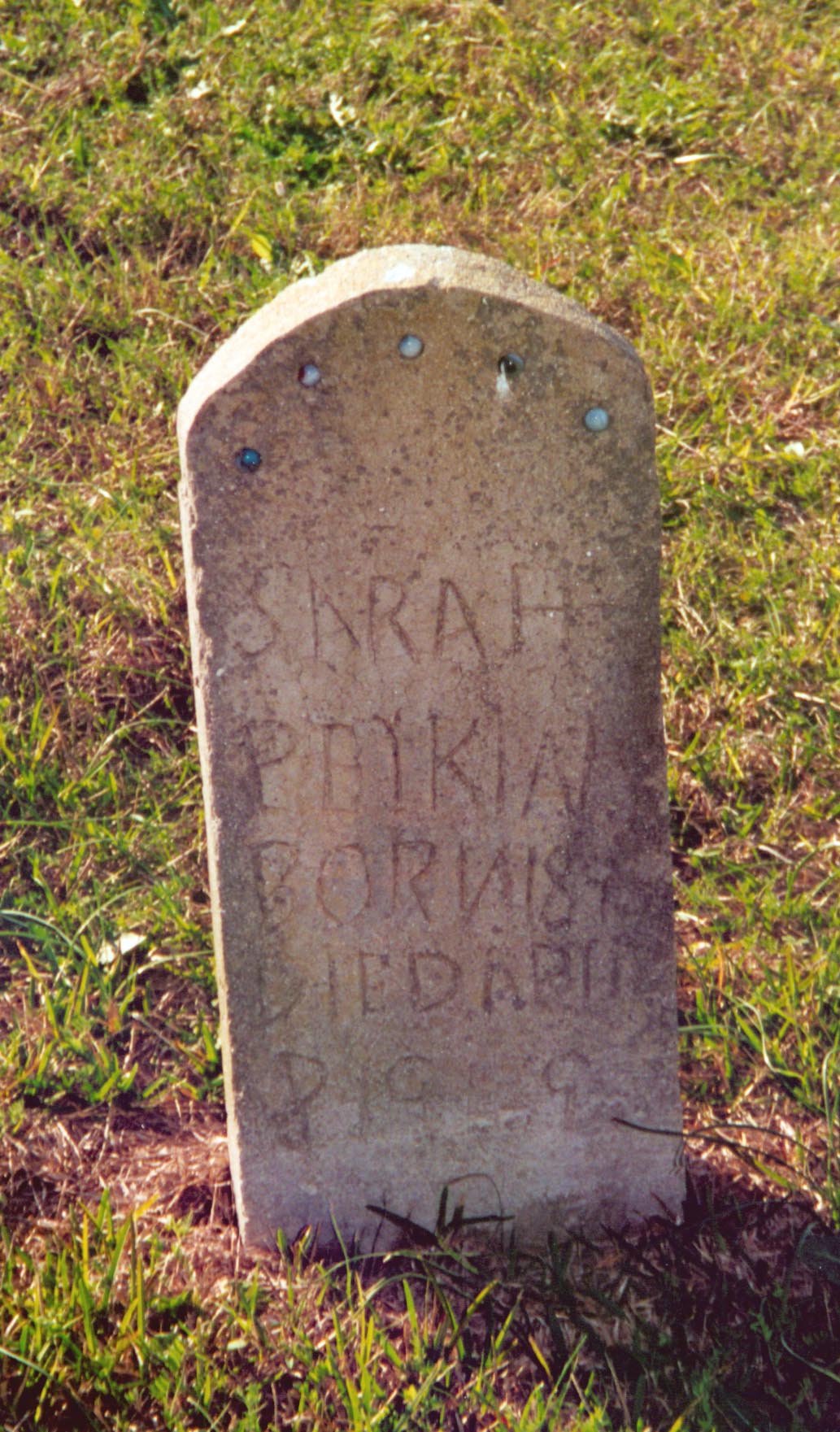
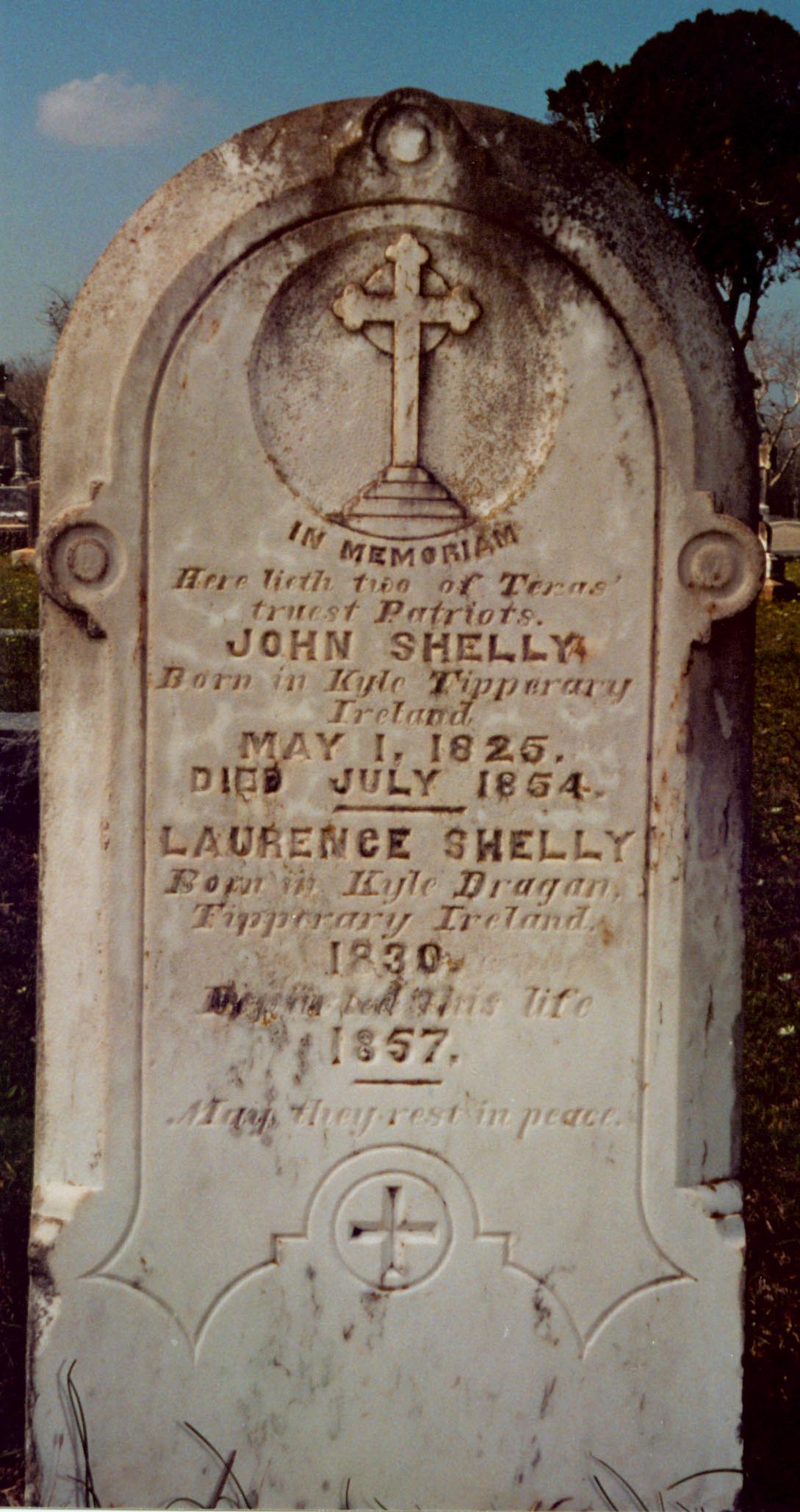
Slavery
In Refugio, the number of slaves wasn't great. In 1863 a total of 223 were
recorded to be owned by Irishmen who were beginning to prosper. Most slaves were bought in
Louisiana or traded and they adopted the names of their owners. The first slave record dated
March 24, 1851 shows: John Fagan, Jeremiah & Robert Driscoll, John O'Brien, Thomas O'Connor (who
owned the most with 14), James Power Jr., C. Powers, and J.H. Wood. Many slaves did find freedom
when they ran away into Mexico. Patrol districts were formed in the area to monitor for any runaway slaves.
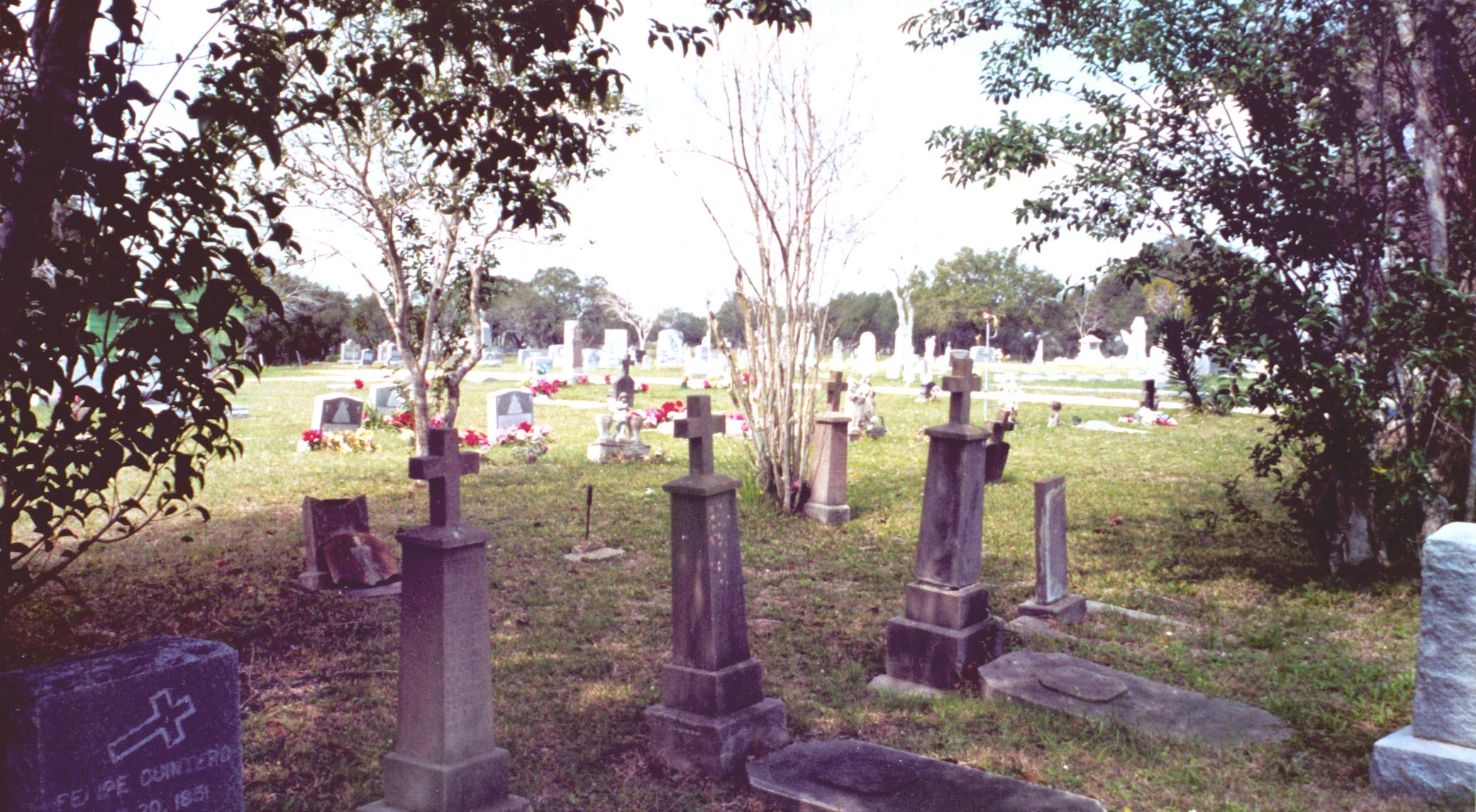
Racial Divide
On the night of June 8, 1874 Thad Swift and his wife were murdered
as they slept in their home. The bodies of the couple were dragged into the yard and left there.
Their three small girls walked miles to family to inform them of what condition their parents were
in. A posse was formed to find the killers and it was suspected that one of the many Mexicans working
for the Swifts had committed the murders. One house was attacked killing one favored, John Holland,
which increased the rage. The house owned by the Moyas was attacked and forced to surrender.
Marcello Moya and his father were killed for being suspects in the murders. It was described by Refugians that within
weeks there were but a few Mexicans left and every one of them was under suspicion. Every Mexican who
was believed to be involved was rounded up. At one point three Mexican men were brought in to jail and
chained to the rooms of the old county jail. A mob later kidnapped and hung them on Saus Creek. Posse men
even stopped carts fleeing the area in search of others. Finally, the confessed killer, Flores, was
captured and later hanged in front of a large crowd. Many other lynchings occurred at the Old Fox Gin
Yard which I couldn't locate. As a result of these murders practically all of the old colonial Mexican
families of Refugio County sold their lands and moved to Mexico.
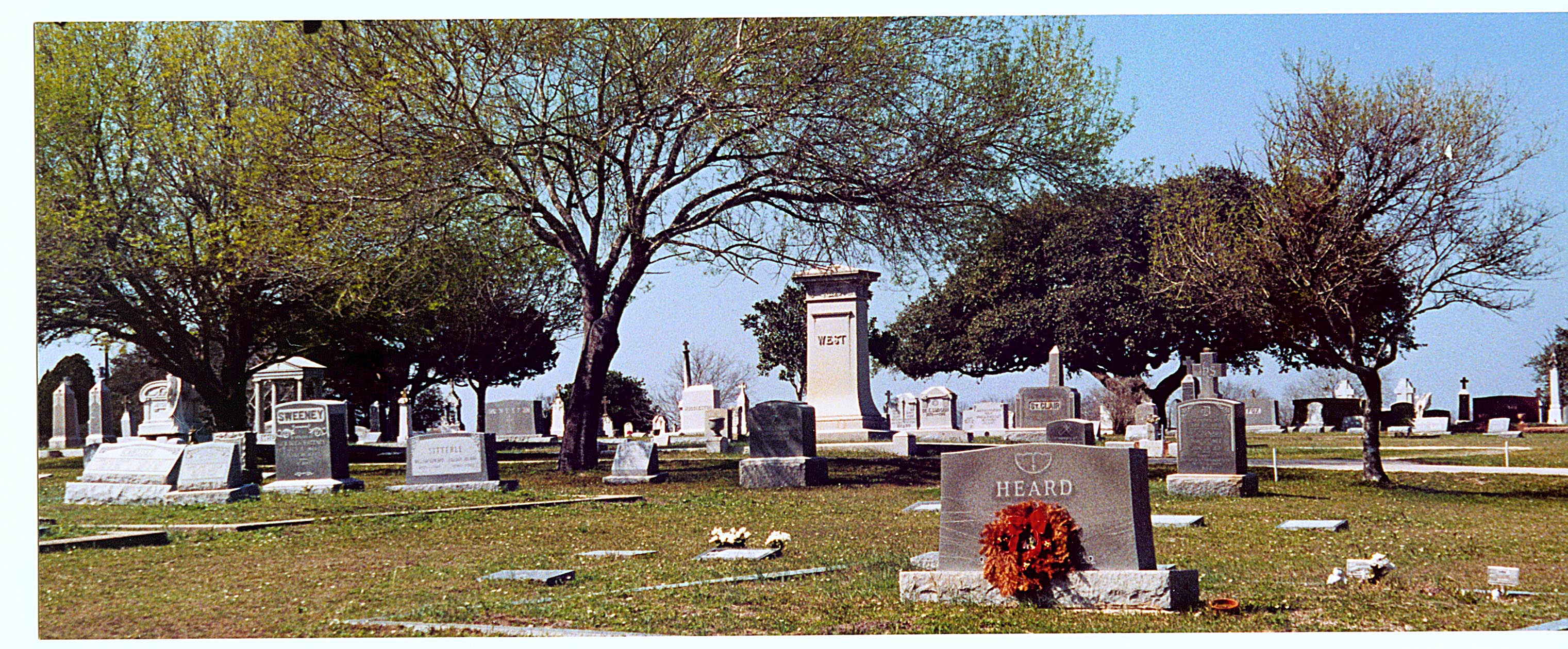
The Cattle Industry
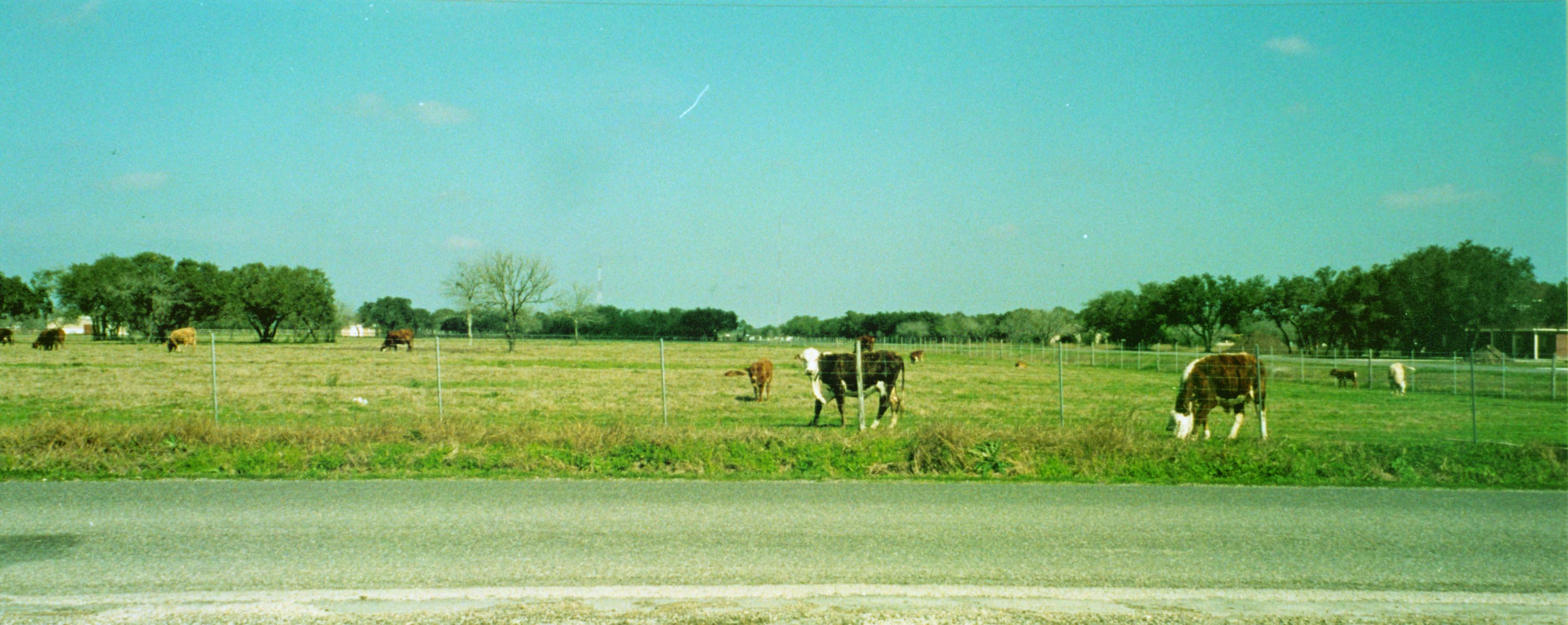
Thomas O'Connor brought the cattle industry to a height never dreamed of by the
olden day rancheros and he became easily the wealthiest man in Refugio. He alone ended the "free range era" with Refugio's first use of the
barbed wire fence. He personally knew Power and Hewetson and all other colonists and had the advantage in
locating non-residential colonists, their heirs and making purchases of their land. Between 1885 - 1906 most of the Refugio was just cattle country.
Today it remains the same with other types of livestock being the difference. Then and now, most of the cattle land is owned by people living
elsewhere. Land is continuously being passed down to heirs.
Stolen Heritage
In the book "Stolen Heritage" by Abel Rubio, he brings to us
another side of the big cattle industry I first read about which was formed by Thomas O'Connor. Rubio learned of a land grant which was was wrongfully
not honored, hence his family's land was taken by Mr. Thomas O'Connor with the use of murder, violence, and intimidation. Through his long research, Rubio discovered that while
his ancestors were living on the land, purchases were being made for the land by O'Connor. In 1875 O'Connors purchases were made while the land was
being occupied by Antonio de la Garza (Rubio's ancestors). The land was passed down to de la Garza from Don Manuel Becerra. The acreage acquired by O'Connor totaled nearly 24,000 acres in 1875, in Refugio County.
Rubio found through his research that the lands were labeled as vacant for sometime when his family was living there at the time. The land was granted
to O'Connor who obtained the rights to it, recognized by the state of Texas, knowing that the family was living there. The land was granted to the O'Connors
by the State Land Commission with the land surveys provided by O'Connor to them, which of course read that the land was vacant. These actions were
performed by O'Connor between May 18, 1875 and May 25, 1875, and were immediately placed in the Refugio map of 1875. As previous research had indicated
O'Connor was the wealthiest man in Refugio and by 1890 he owned 390,267 acres of land, mostly in Refugio County.
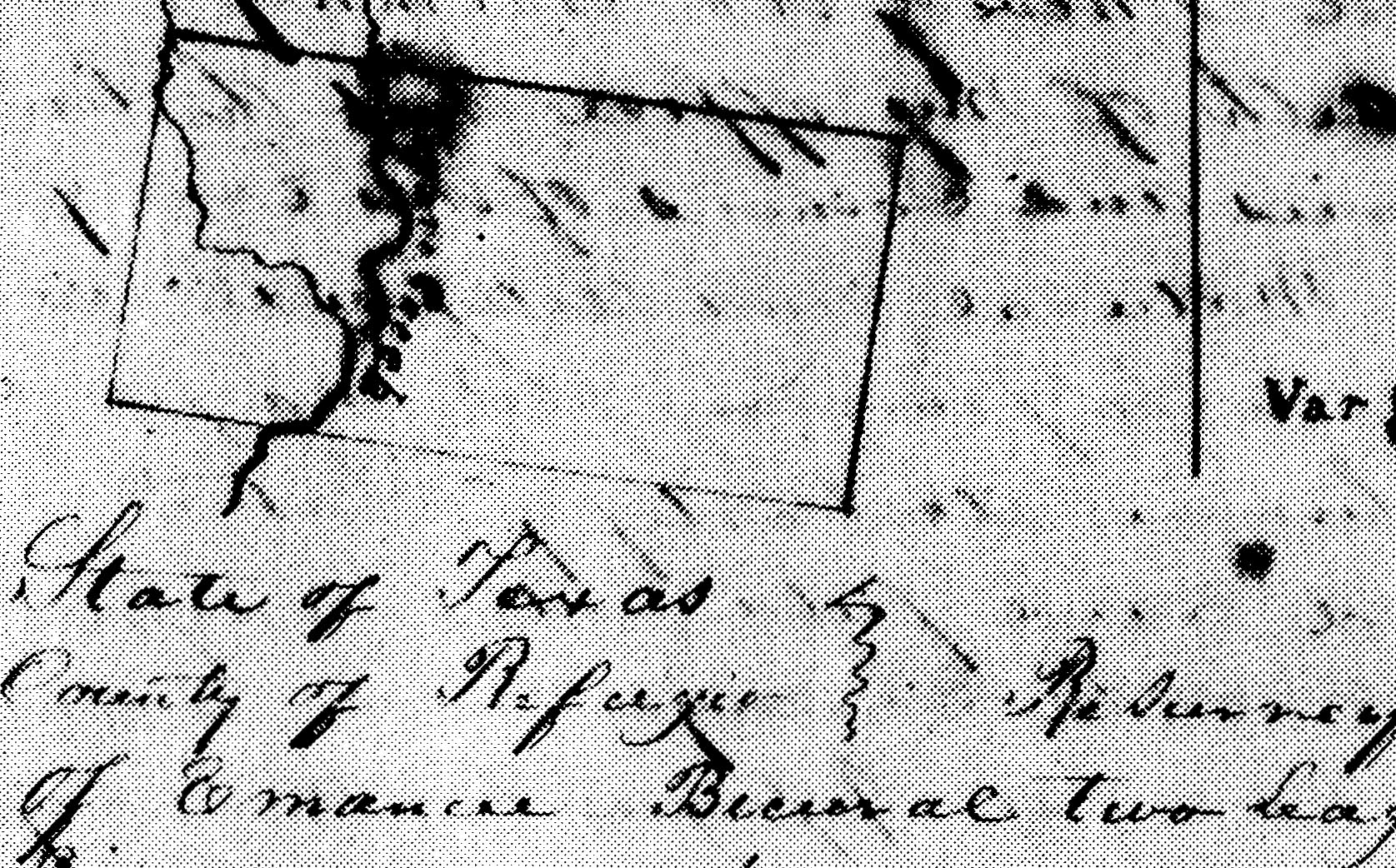 The reason for the land being so attractive was because it was valuable to raising cattle. It sat in the junction of two creeks one being Copano Creek and provided an excellent water resource. It is important to remember, that at the time Mexico was
providing grants to early colonists, who included James Power and Rubio's ancestor, Don Manuel Bacerra. It is documented that Power had several land grant disputes, one documented was with Becerra. No resolution came
about and the land was unlabeled or treated as vacant. By the time Texas had been annexed by the United States, this tactic was discovered by O'Connor and he took advantage of it by registering it with the State Land
Commission. O'Connor couldn't take control of the land initially because local residents and sheriffs knew that the land was owned at the time. It was in the year 1875-1877 when the de la Garza's had to flee
the area due to the tensions grown towards Mexicans as a result of the Swift family murders (see above-Racial Divide). This then gave O'Connor the opportunity to acquire the land the same year, 1875, in his pursuit of the industry
of "Big Cattle". Abel Rubio and his family took the O'Connors to court in the 1970's, but due to the statute of limitations the case wasn't resolved in their favor. Out of curiousity, I called the Refugio County Library and asked if
they carried the book, Stolen Heritage-they did not.
The reason for the land being so attractive was because it was valuable to raising cattle. It sat in the junction of two creeks one being Copano Creek and provided an excellent water resource. It is important to remember, that at the time Mexico was
providing grants to early colonists, who included James Power and Rubio's ancestor, Don Manuel Bacerra. It is documented that Power had several land grant disputes, one documented was with Becerra. No resolution came
about and the land was unlabeled or treated as vacant. By the time Texas had been annexed by the United States, this tactic was discovered by O'Connor and he took advantage of it by registering it with the State Land
Commission. O'Connor couldn't take control of the land initially because local residents and sheriffs knew that the land was owned at the time. It was in the year 1875-1877 when the de la Garza's had to flee
the area due to the tensions grown towards Mexicans as a result of the Swift family murders (see above-Racial Divide). This then gave O'Connor the opportunity to acquire the land the same year, 1875, in his pursuit of the industry
of "Big Cattle". Abel Rubio and his family took the O'Connors to court in the 1970's, but due to the statute of limitations the case wasn't resolved in their favor. Out of curiousity, I called the Refugio County Library and asked if
they carried the book, Stolen Heritage-they did not.
First Map of Town: created on January 12, 1893, Blocks were numbered for the first time.
First Telephone Line in the County: 1892, built by Martin Mcguill with only a few served at ranches. Local service not brought in until March 1900-switchboard installed at the Hornburg residence in May 1900.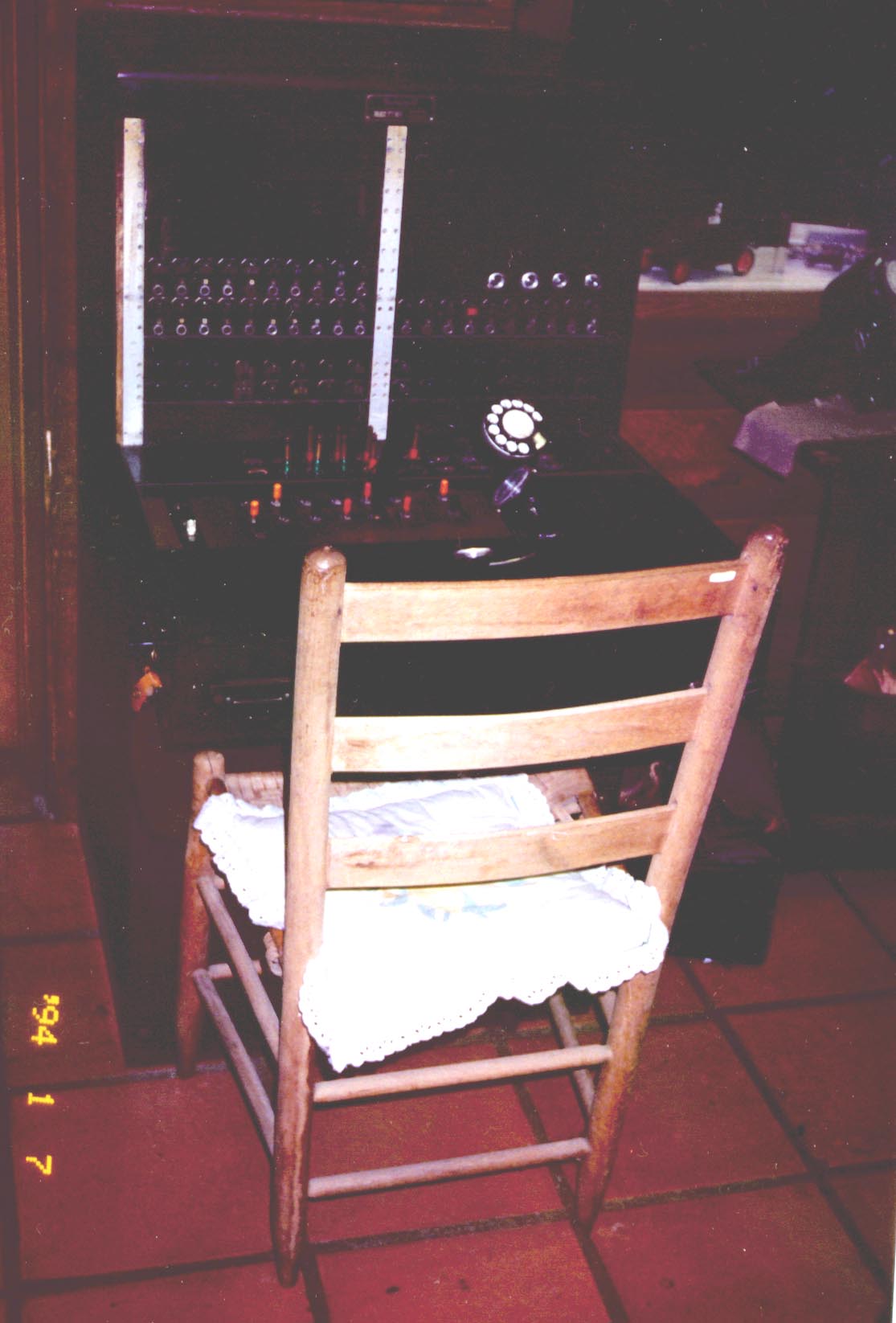
First Newspaper: The Refugio Register July 13, 1895
First Phonograph Concert: given at the courthouse, where Frank B. Rooke brought the first disc record phonograph.
First Bicycle: 1886 large & small wheel style
First Automobile: Oldsmobile Steamer, bought by James Fowler for Father Donada
First Bank: Bank of Refugio opened on Toupes block on the corner of one story wooden building.
Birthplace of Nolan Ryan, famous Major League Baseball Pitcher
No refrigeration or electric service until March of 1905
WEBSITES:
REFUGIO,TX
ANNOTATED BIBLIOGRAPHY:
Millie, from Refugio County Museum
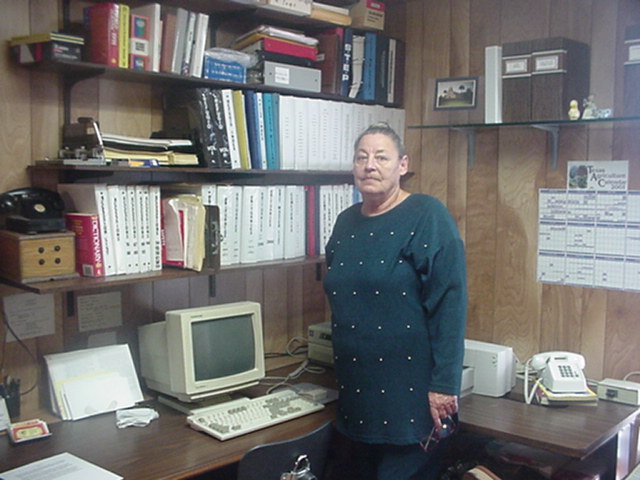 Millie was the first person I had spoken with about the History of Refugio and she provided me with alot of information that
provided the base of my research. It was surprising to me how much she knew off the top of her head and she was very generous with her time.
Millie was the first person I had spoken with about the History of Refugio and she provided me with alot of information that
provided the base of my research. It was surprising to me how much she knew off the top of her head and she was very generous with her time.
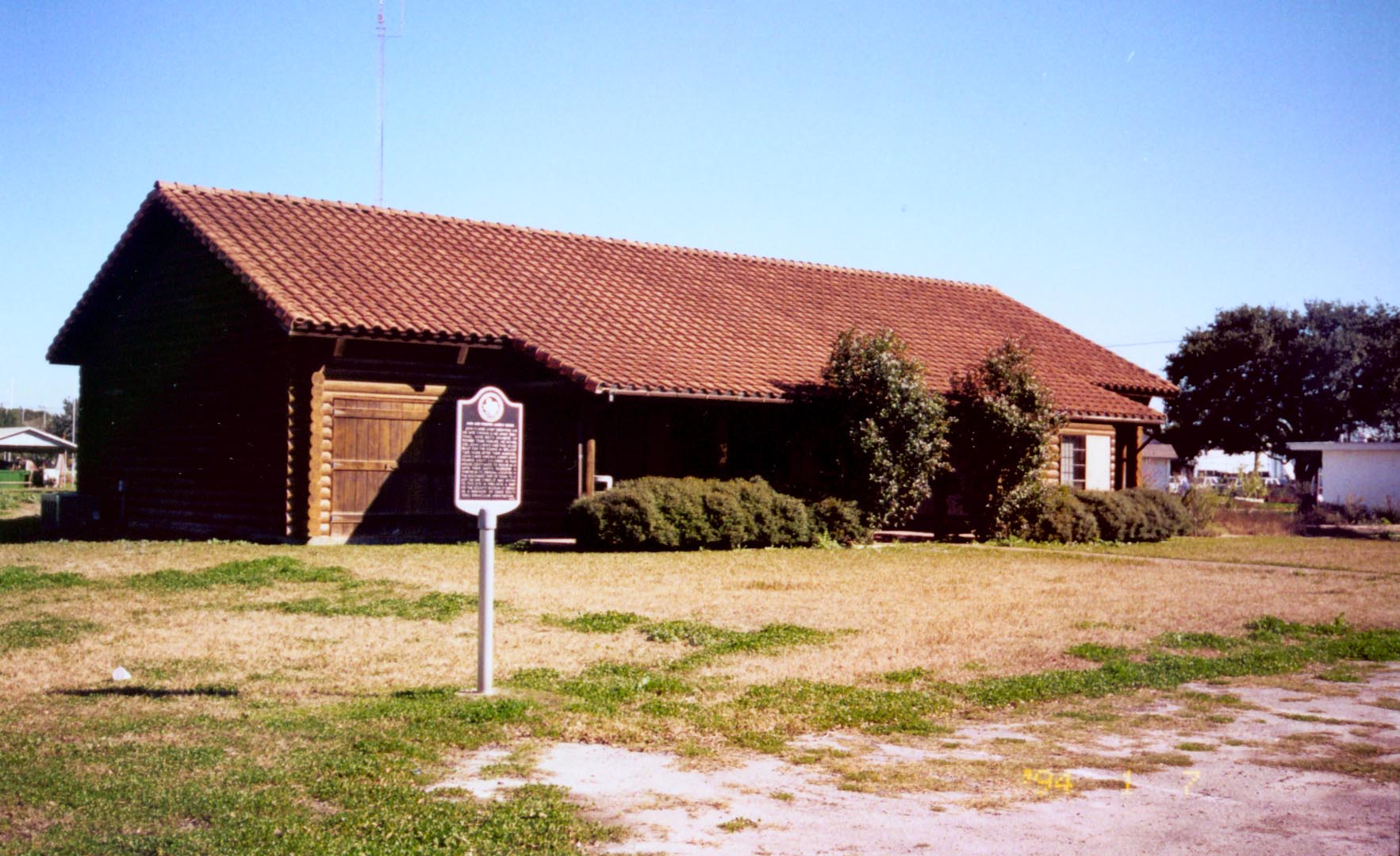
The Refugio County Museum
This is the Refugio County Museum where Millie worked and was able to give me a tour of the building. I had never been in a museum where I was able to tough everything even the Mammouth shoulder
bone she let me handle and of course the bell from the original mission.
History of Refugio County, Texas, 1985 Without this book, I don't know what I would have done. The book is almost overwhelming with the amount of information it contains. I was able to read out of a copy provided to me by one of the Fagan descendents, Travis Fagan. The
book begins from beginning to end on the history of Refugio, and believe me it isn't thin.
A Pictoral History of Refugio County by Lucile Fagan Snider, Nortex Press Again, another book graciously, provided to me by a Fagan ancestor (early Irish settler) this book had so many pictures but they couldn't be displayed clearly on the site. There are so many it isn't any wonder to
why a book was made. What it did help me with was with locations of certain sites I was looking for while traveling the area. There are also very interesting letters from people as far back as the days of the first Irish settlers.
Rubio,Abel. Stolen Heritage: A Mexican American's Rediscovery Of His Family's Lost Land Grant, Eakin Press Austin, TX, 1986 This came to my attention towards the end of my project research. I couldn't keep my hands off of it. All I knew was what was researched through the eyes of the early European settlers. I received a lot of cold shoulders about this
book when I tried to ask about it from people in the area including some people who I was glad I wasn't in a secluded place with. Regardless, I am sure many of these things went on during the era of "land hunger" for enterprise. It was very unfortunate to hear the end result of the trial especially
after all that had been sacrificed by Mr. Rubio and his family. I was most imspired by the history his own family was aware of as far back as the years when Mexico owned our state. This is a rare occurrance through out Mexican Americans whom I have known, even my own family.
Huson, Hobart. Refugio: A Comprehensive History of Refugio County. 2 Vols. This book seems to be the core of all other history books written about Refugio and Refugio County. They all do have this one as a reference and I was lucky enough to locate the copies at the public library Texana section. There is so much information in these
two volumes which contain also letters from people who survived the wars such as the Battle of Refugio.
Return to Small Town Research Projects Index






 Many pieces of Spanish ceramics, animal
bones, and other relics were found at the site. Although, Father Silva's and
Father Garza's attempts to Christianize the Indians failed, their decision to
establish the mission in Refugio was significant in the town's name. In 1795 the
site was chosen for the mission by Father Silva and named, Nuestra Senora Del
Refugio or Our Lady of Refuge. The site was chosen for its grazing, possibilities for raising
corn, beans and other vegatables. As a result of the Indians disinterest in
the mission, it was deserted for a long period of time. From 1820 - 1830 the
mission went to total ruin and it wasn't until the Irish colonizers arrived that the
mission began to see new life. As the luck of the Irish would have it, the
Irish immigrants were also Catholic and saw to it that the same site selected
200 years ago would remain the same. Our Lady of Refuge was the last mission
built in Texas. The Irish restored the mission in 1845 using the ruins of the
old mission. After the church survived the Civil War the parishioners saw the
need for improvements and again the mission was rebuilt using the stone from the
old mission in 1866. When the need for more space was identified the
mission was rebuilt to the present church for a mere $14,000 in 1901, and became
the largest frame church in South Texas at the time. In 1975 restoration of the
current church was done.
Many pieces of Spanish ceramics, animal
bones, and other relics were found at the site. Although, Father Silva's and
Father Garza's attempts to Christianize the Indians failed, their decision to
establish the mission in Refugio was significant in the town's name. In 1795 the
site was chosen for the mission by Father Silva and named, Nuestra Senora Del
Refugio or Our Lady of Refuge. The site was chosen for its grazing, possibilities for raising
corn, beans and other vegatables. As a result of the Indians disinterest in
the mission, it was deserted for a long period of time. From 1820 - 1830 the
mission went to total ruin and it wasn't until the Irish colonizers arrived that the
mission began to see new life. As the luck of the Irish would have it, the
Irish immigrants were also Catholic and saw to it that the same site selected
200 years ago would remain the same. Our Lady of Refuge was the last mission
built in Texas. The Irish restored the mission in 1845 using the ruins of the
old mission. After the church survived the Civil War the parishioners saw the
need for improvements and again the mission was rebuilt using the stone from the
old mission in 1866. When the need for more space was identified the
mission was rebuilt to the present church for a mere $14,000 in 1901, and became
the largest frame church in South Texas at the time. In 1975 restoration of the
current church was done. During restoration, when the church's statues were
repainted it was discovered that they were made of metal, dating them to the
19th century. With funding currently in the works there are hopes by the people
of Refugio to someday rebuild the original mission created by Father Silva for
the Indians. The picture of the bell is one of four original bells from the
mission. The towers they stood in were destroyed twice during battle - one
during the Mexican Independence Movement (1810-1821), and again during the
Texas Independence Movement. Since the mission was no longer operating, the bells
were sold for scrap and while in route to Victoria, an ox-cart wheel broke and
the bells were abandoned. Two were destroyed and one later discovered by
Nicholas Fagan and it hung in the Fagan private chapel for 50 years until it
was eventually donated to the museum where it stands today. The date on the bell
is 1737.
During restoration, when the church's statues were
repainted it was discovered that they were made of metal, dating them to the
19th century. With funding currently in the works there are hopes by the people
of Refugio to someday rebuild the original mission created by Father Silva for
the Indians. The picture of the bell is one of four original bells from the
mission. The towers they stood in were destroyed twice during battle - one
during the Mexican Independence Movement (1810-1821), and again during the
Texas Independence Movement. Since the mission was no longer operating, the bells
were sold for scrap and while in route to Victoria, an ox-cart wheel broke and
the bells were abandoned. Two were destroyed and one later discovered by
Nicholas Fagan and it hung in the Fagan private chapel for 50 years until it
was eventually donated to the museum where it stands today. The date on the bell
is 1737.

 native Ireland. They had to adjust to the heat of Texas and their first
encounters with rattlesnakes and water moccasins. Being deeply religious people, their
only experience with these serpents was what they read in the bible. After
approximately 10 years of Mexico's independence it began to face troubles under
native Ireland. They had to adjust to the heat of Texas and their first
encounters with rattlesnakes and water moccasins. Being deeply religious people, their
only experience with these serpents was what they read in the bible. After
approximately 10 years of Mexico's independence it began to face troubles under
 the rule of now dictator, General Santa Anna. He feared that because of
increased American interest that Texas might be lost. So too, came the increased
presence of soldiers in the area. At the same time several Americans were
settling into the area without Mexico's approval. A zero tolerance rule was
put into effect by Santa Anna's relative, General Cos, and Power was advised
that punishment would come to all Texans who failed to obey Mexican law. It was
because of the show of force that militias were formed and for Refugio, their
leaders were James Power and his Captain Ira Westover. Power was later
elected as a delegate for Refugio and appointed by General Sam Houston to serve
on the Land and Indian Affairs Committee. Later, during a meeting of the
delegates, Sam Houston called for a Declaration of Independence made by the
people of Texas. It was James Power who was the first to sign followed by the
other delegates. Power died at the age of 63 on August 14, 1852 and his body was
moved to its now present site in 1870.
the rule of now dictator, General Santa Anna. He feared that because of
increased American interest that Texas might be lost. So too, came the increased
presence of soldiers in the area. At the same time several Americans were
settling into the area without Mexico's approval. A zero tolerance rule was
put into effect by Santa Anna's relative, General Cos, and Power was advised
that punishment would come to all Texans who failed to obey Mexican law. It was
because of the show of force that militias were formed and for Refugio, their
leaders were James Power and his Captain Ira Westover. Power was later
elected as a delegate for Refugio and appointed by General Sam Houston to serve
on the Land and Indian Affairs Committee. Later, during a meeting of the
delegates, Sam Houston called for a Declaration of Independence made by the
people of Texas. It was James Power who was the first to sign followed by the
other delegates. Power died at the age of 63 on August 14, 1852 and his body was
moved to its now present site in 1870. 


 King disputed Ward's command after King argued
he had already faced the enemy. Ward didn't agree and King left the mission.
They attacked Mexican owned ranches and then came back to the mission where they
found 1,500 Mexican army men occupying the city of Refugio. After being noticed
by the enemy and after four attacks between King and Urrea's men, King and his
men were captured. Thirty-six men including King were taken approximately one mile north
of the mission, connected by a single rope in pairs. While this was going on,
Ward and his men at the mission went into battle and later retreated to Goliad
with orders. Mexican soldiers were upset after noticing the missing Texans and
took control of the mission containing women and children and the injured. Urrea
left the mission on March 16th and marched toward Goliad.
King disputed Ward's command after King argued
he had already faced the enemy. Ward didn't agree and King left the mission.
They attacked Mexican owned ranches and then came back to the mission where they
found 1,500 Mexican army men occupying the city of Refugio. After being noticed
by the enemy and after four attacks between King and Urrea's men, King and his
men were captured. Thirty-six men including King were taken approximately one mile north
of the mission, connected by a single rope in pairs. While this was going on,
Ward and his men at the mission went into battle and later retreated to Goliad
with orders. Mexican soldiers were upset after noticing the missing Texans and
took control of the mission containing women and children and the injured. Urrea
left the mission on March 16th and marched toward Goliad. Under pressure from
peers he then ordered the 32 Texans (King's Men) killed and they were shot in
cold blood and not treated as prisoners of war. While Ward was trying to retreat,
he ended up only traveling in circles around the mission and was captured. He
then was taken to Goliad eventually where on Palm Sunday, March 27, he and
Fannin's men were massacred even after they surrended under a white flag. King's men in
Refugio were left to rot and were re-discovered by Refugians after their bones
were found after people began to settle again in the area.
Under pressure from
peers he then ordered the 32 Texans (King's Men) killed and they were shot in
cold blood and not treated as prisoners of war. While Ward was trying to retreat,
he ended up only traveling in circles around the mission and was captured. He
then was taken to Goliad eventually where on Palm Sunday, March 27, he and
Fannin's men were massacred even after they surrended under a white flag. King's men in
Refugio were left to rot and were re-discovered by Refugians after their bones
were found after people began to settle again in the area.
 news finally reached Refugio it was described as the biggest Irish wake ever held. In a nearby saloon
an Irishman was quoted, "Faith and bejabers, and the damn yankees got all the water there was in the
county, and, begobs, it is me that hopes they-all will drown their damned selves in it! Come on byes and
how about another wee drink?" The festival was held at Bill Doughty corner saloon which opened in 1873. The picture of bottles
are the same bottles which surrounded the corner saloon. They were placed bottoms up as the floor to
the sidewalk. They lasted from 1875 - 1931 and the saloon had a gambling house connected where a many
"shot it out" to settle a poker game.
news finally reached Refugio it was described as the biggest Irish wake ever held. In a nearby saloon
an Irishman was quoted, "Faith and bejabers, and the damn yankees got all the water there was in the
county, and, begobs, it is me that hopes they-all will drown their damned selves in it! Come on byes and
how about another wee drink?" The festival was held at Bill Doughty corner saloon which opened in 1873. The picture of bottles
are the same bottles which surrounded the corner saloon. They were placed bottoms up as the floor to
the sidewalk. They lasted from 1875 - 1931 and the saloon had a gambling house connected where a many
"shot it out" to settle a poker game. 







 Millie was the first person I had spoken with about the History of Refugio and she provided me with alot of information that
provided the base of my research. It was surprising to me how much she knew off the top of her head and she was very generous with her time.
Millie was the first person I had spoken with about the History of Refugio and she provided me with alot of information that
provided the base of my research. It was surprising to me how much she knew off the top of her head and she was very generous with her time.
